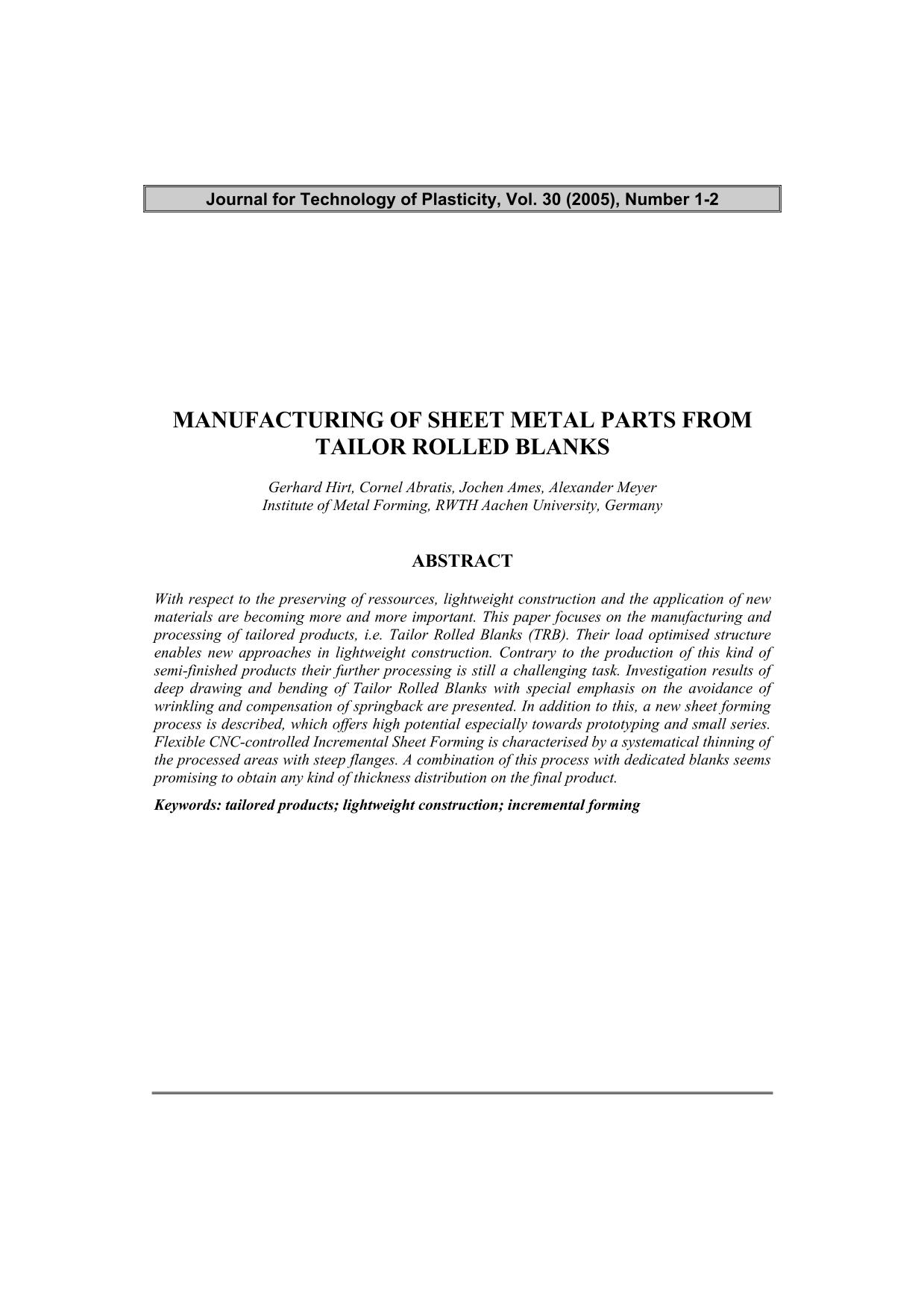
Published 2005-12-22
abstract views: 38 // Full text article (PDF): 28
Keywords
- tailored products,
- lightweight construction,
- incremental forming
How to Cite

This work is licensed under a Creative Commons Attribution 4.0 International License.
Abstract
With respect to the preserving of ressources, lightweight construction and the application of new materials are becoming more and more important. This paper focuses on the manufacturing and processing of tailored products, i.e. Tailor Rolled Blanks (TRB). Their load optimised structure enables new approaches in lightweight construction. Contrary to the production of this kind of semi-finished products their further processing is still a challenging task. Investigation results of deep drawing and bending of Tailor Rolled Blanks with special emphasis on the avoidance of wrinkling and compensation of springback are presented. In addition to this, a new sheet forming process is described, which offers high potential especially towards prototyping and small series. Flexible CNC-controlled Incremental Sheet Forming is characterised by a systematical thinning of the processed areas with steep flanges. A combination of this process with dedicated blanks seems promising to obtain any kind of thickness distribution on the final product.

